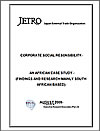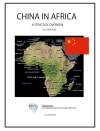 Electricity Supply Commission Of Malawi (ESCOM)
Electricity Supply Commission Of Malawi (ESCOM)
All data are collected in the Fiscal Year of 2008-2009.
Company Profile and History
Electricity is provided by the Electricity Supply Commission of Malawi (ESCOM). ESCOM has a relatively extensive transmission system. The main transmission line is a 132kV spine that runs the length of the country and connects all the main towns. Sub-transmission lines of 66kV further extend the system. The level of electrification is, however, extremely low. Only about 25 percent of urban households and about 1 percent or rural households have access to electricity supply, and the rate of expansion of the system is declining. The overall rate of electrification is estimated at 7 percent.
Hydropower generation is the largest source of energy. ESCOM’s total installed capacity is estimated at 304 MW. Of this, approximately 285MW (94 percent) is generated by hydropower and the remaining 19MW (6 percent) is thermal.
ESCOM Ltd is a public utility which was incorporated under the Companies Act of the Republic of Malawi in 1998 as a limited liability Company with its own articles of Association. The utility has a multiple reporting structure. It reports through its Board of directors to the Ministry of Natural Resources and Environmental Affairs (As ministry responsible for energy affairs) on all technical and related policy matters to the Department of Statutory Corporation on administrative and the Ministry of Finance on finance and budgetary matters.
ESCOM has an estimated 200 000 customers. Three sub companies namely, Southern Electricity Supply (SES), Central Electricity Supply (CES) and Northern Electricity Supply (NES) run distribution at regional levels.
In Country Location
Electricity Supply Corporation of Malawi Limited, ESCOM House, 9 Haile Selassie Road, Blantyre; Tel: (+265) 1 822 000; Fax: (+265) 1 822 008
Services and Products
Its principal business is to generate, transmit, distribute and retail electricity services nationwide through its interconnected and off-grid power supply systems. The utility handles large portfolio of electricity and civil works, projects of development and maintenance nature to meet electricity demand.
Number of Employees
2,392 employees
Financial Information
April 2007 to March 2008
Revenue (US$ million): 45, 6
Net income (US$ million): 11
SALES SUMMARY 2006-2007
| Consumers | Units Sold | T/Units Sold | |
|---|---|---|---|
| Domestic | 111,570.0 | 275,126,740.1 | 4.62 |
| Domestic(Prepaid) | 20,960.0 | 160,369,508.1 | 4.20 |
| General | 31,496.0 | 198,345,691.5 | 8.11 |
| Power - Low Voltage | 713.0 | 217,169,507.7 | 9.45 |
| Power - Medium Voltage | 50.0 | 296,280,588.4 | 4.35 |
| Export | 6.0 | 18,537,628.2 | 7.56 |
| TOTAL | 164,795.0 | 1,165,829,664.0 | 6.03 |
Market Share
ESCOM is the sole provider of electricity in Malawi
Business Objective
“To supply the Malawi Nation with adequate and reliable electric power”
Business Model
The company is undergoing major reforms to align it with the provisions of the Energy policy 2003 which calls for the liberalization of the power supply industry. One consequence of this reform has been the establishment of Business Units of Generation, Transmission and distribution through which commercial transactions of the utility are now being included.
There are a number of strategies being implemented by ESCOM Transmission to ensure improved quality power supply, including the improved design of structures to ensure reliable delivery of power to customers.
Ownership of Business
It is owned almost wholly by the Government of Malawi (99 percent), while the remaining shares of 1 percent are held by Malawi Development Corporation (MDC).
Benefits Offered and Relations with Government
ESCOM is nominally an autonomous parastatal organisation, but in reality all decisions on tariff setting, investments, and borrowing are made by the government.
The Malawi Government’s economic programme is set out in the Malawi Growth and Development Strategy (MGDS). It is the overarching strategy for Malawi for the five years between 2006 and 2011. The overall objective of the MGDS is “poverty reduction through sustainable economic growth and infrastructure development”. Government places energy supply as one of the priority sectors in the MGDS and defines its long term goal in energy generation and supply as “to generate sufficient amount of energy to meet economic and social demands”.
Although the National Energy Policy for Malawi was approved in 2003, its implementation was not immediate. What was crucial to the implementation process was the establishment of the sector wide regulator, MERA, which was established in December 2007. MERA is not yet fully operational.
The Department of Energy Affairs in the Ministry of Energy and Mines manages the energy sector. The Department aims at fully satisfying the public need for quality energy services by providing sound policy guidance and effective private sector driven industry. It also monitors the utilisation of energy sources in the country and also certifies companies which install solar PV.
The newly established regulator is regarded as independent; however, it has strong relationship with the government which could impair its level of independence.
TARIFFS / Electricity charges with effect from 1st May, 2006
| Tariff Category | Metering Type | Description | Charges |
|---|---|---|---|
| Scale I | Billing | Domestic Tariff Customers | |
| Fixed Charge per Month | 124.7085 | ||
| For each unit consumed of the first 30 units per month | 2.6708 | ||
| For each unit consumed in excess of 30 units and less than 750 units per month | 3.9146 | ||
| For each unit consumed in excess of 750 units per month | 5.5501 | ||
| Prepayment | Domestic Tariff Customers | ||
| For each unit purchased | 4.2481 | ||
| Scale II | Billing | General Tariff Customers | |
| Fixed Charge per month for Single phase supply | 408.9016 | ||
| Fixed Charge per month for three phase supply | 569.9915 | ||
| For each unit consumed per month | 7.3373 | ||
| Prepayment | General Tariff Customers | ||
| Fixed Charge per month - Single phase customers | 408.9016 | ||
| Fixed Charge per month - Three phase customers | 569.9915 | ||
| For each unit purchased | 7.3373 | ||
| Scale III |
Standard (Billing) |
Standard Maximum Demand Tarrif - Low Voltage Customers | |
| Fixed Charge per month | 1509.0961 | ||
| For each unit consumed per month | 4.0923 | ||
| MD charge per KVA | 961.3659 | ||
|
Time of Use (Billing) Optional Tariff |
Optional Maximum Demand Tarrif - Low Voltage Customers | ||
| Fixed Charge per month | 1509.0961 | ||
| For each unit consumed per month | 4.0923 | ||
| On peak MD charge per KVA. | 961.3658 | ||
| Off peak MD charge per KVA. | 480.6829 | ||
| Scale IV | Standard (Billing) | Standard Maximum Demand Tariff - Medium Voltage Customers | |
| Fixed Charge per month | 1455.0823 | ||
| For each unit consumed per month | 3.2831 | ||
| MD charge per kVA. | 898.5208 | ||
| Time of Use (Billing) | Optional Maximum Demand Tariff - Medium Voltage Customers | ||
| Fixed Charge per month | 1455.0823 | ||
| For each unit consumed per month | 3.2831 | ||
| On peak MD charge per kVA. | 898.5208 | ||
| Off peak MD charge per kVA. | 449.2604 | ||
| Scale V | Export | Export Tariff for Supply of Electricity to border towns | |
| For each unit consumed per month in USD | 0.0140 | ||
| On peak MD charge per kVA in USD | 13.7700 | ||
Product Development
Following the development of the Power Sector Reform Strategy, the Government of Malawi, through the department of Energy in close collaboration with key stakeholders started to implement broader reforms in the Energy sector. These reforms call for greater involvement of the private sector in the production and delivery of power, and particularly the introduction of private sector participation in the operations of ESCOM. One of the activities being undertaken is to develop modalities for attracting private investment in new power generation stations through Independent Power Producers (IPPs) who would sell their power to the transmission company, thereby providing increased capacity to the national grid, with excess being available for export into the region through the Southern Africa Power Pool (SAPP).
The Government has set aside funds in 2008 for the improvement of electric power supply in Malawi and intends to make available part of these funds to ESCOM for the execution of short and medium term interventions to improve and expand the core electric power generation network. ESCOM will use part of these funds to develop Phase II of the Kapichira Hydroelectric Power Scheme on the Shire River at Kapichira Falls in Chikwawa District. This Phase II Development is intended to enhance both the capacity and reliability of the electric power supply in the country.




